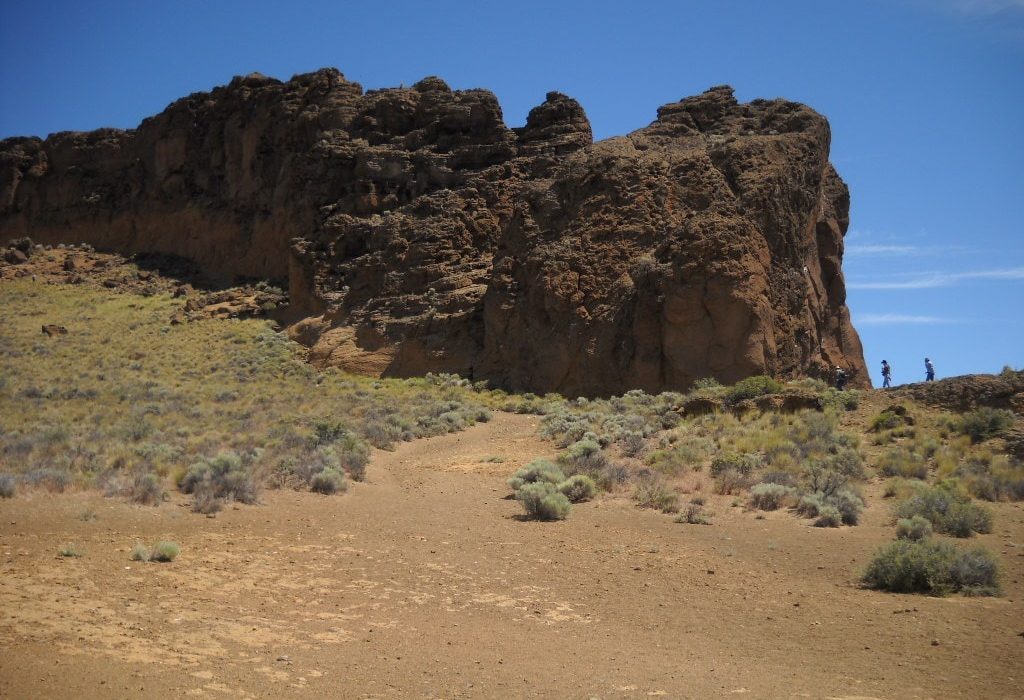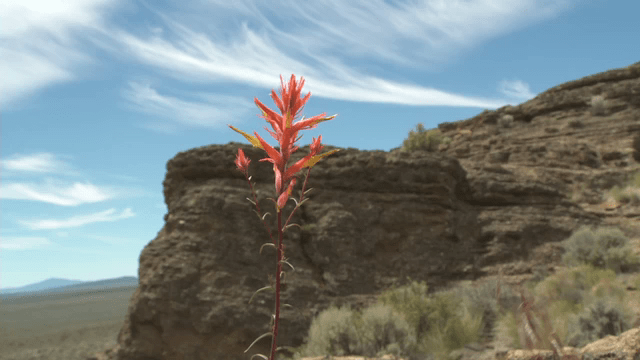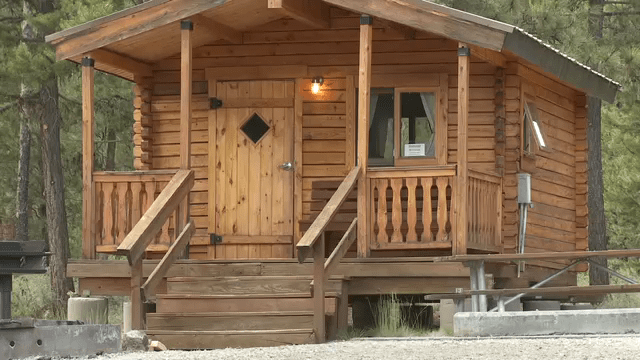Oregon’s high desert is vast, timeless and remote – where distances are great and people are few and where the only outpost for miles is unlike any state park you’ve ever seen. At Fort Rock State Park, you won’t find many people, phones, radios or TV’s and many of the people who visit the distant site like it that way.
“I saw it through the forest from a distance and thought, ‘Is that it? Is that it?” said Eugene resident David Foster. He traveled to Fort Rock – camera in hand – to explore a unique chapter in Oregon geologic history far away from the city’s hub-bub and noise. “Is there anything better than this,” he asked with a chuckle. “I don’t think so! I mean – with imagination, you can see the waves breaking and weathering the rocks over tens of thousands of years. This was a very different place back then!”
Foster is right! Fort Rock isn’t an old military outpost, but an ancient volcanic eruption. It was a small basaltic vent that formed a tuff ring when it first exploded to the surface – and under the water – 100,000 years ago. The surrounding landscape was once an expansive inland freshwater sea – up to three hundred feet deep – that resulted from melting glaciers that reached into the area.
“It’s a landmark,” said Joe Wanamaker, Oregon State Park Manager. ”You can see for miles around and it’s very distinct; almost a perfect circle with one side missing.”
Over thousands of years, wave action of the lake eroded the tuff ring’s southwest wall away and left terraces along the front and insides of Fort Rock. Most park visitors enjoy exploring the expansive caldera, searching for petroglyphs and the towering the rock walls are intriguing places to scramble on or try some easy rock climbing.
“There is a short – 1.2 mile long – loop trail that goes through the entire caldera,” said Wanamaker. There are pretty spectacular formations where you can actually see the magma’s gas pockets, plus the lake sediment under your feet is quite sandy and offers easy walking – it’s all pretty neat.”
Be prepared for wildlife viewing opportunities of all sorts too, from soaring prairie falcons to perching eagles. Or down low to the ground, speedy lizards that zigzag across the rock formations. Plus, there are many varied and colorful desert wildflowers skirt the hiking trail.
Wanamaker added that the summer temperatures can soar to a hundred degrees, so be prepared with water, sunscreen and solid boots. “No flip flops!” advised Wanamaker. “This rock is abrasive and if you wish to do some rock scrambling, you’ll want to wear good boots.”
If you want to ramble for a longer stay, check in at LaPine State Park 45 minutes away along State Highway 97. The huge parkland offers rustic cabins for rent, plus full hook ups for trailers or RVs. “The LaPine State Park location is central to so many recreation activities,” said Wanamaker. “The High Desert Museum is nearby; there are countless Cascade lakes for fishing, plus the Deschutes River winds through our parkland.”
David Foster said that Fort Rock calls him back and may do the same for you – so bring a camera to capture intriguing scenery and to let your imagination travel back to a distant time on Oregon.
“The geology of Oregon is amazing,” said Foster. “And a lot Oregonians have no idea of what’s out here. There’s so much to Oregon. It’s amazing!”



